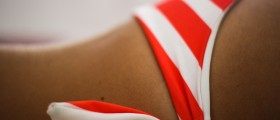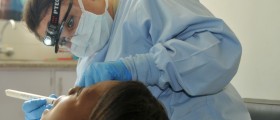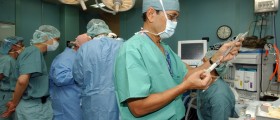The Hymen
The hymen is a membrane placed in the vagina. It consists of fibrous and elastic tissue, and it only partially covers the introitus of the vagina.
In young women, the vascularisation of the hymen is very good. In menopausal women, this membrane is very thin due to aging.
The actual function of the hymen has not been explained yet. Some scientists believe that it actually protects young girls from infections. Since the closure of the introitus of the vagina is not complete menstrual blood can be released without any problems.

In many cultures and religions, the social importance of the hymen is amazing. Women are supposed to stay intact prior the marriage. During the first sexual intercourse, the hymen ruptures, and a woman bleeds. The amount of blood varies a lot, and some women may experience pain.
The presence of the blood on the sheets confirms that a woman has been intact before the marriage. In case that woman has had sexual intercourse before the marriage, she will not bleed during the first wedding night. This is why some women undergo hymen restoration. This operation has become very popular in recent years.
Restoration of the Hymen
Virginity restoration can be done by several surgical procedures including hymenoplasty, hymenorrhaphy, or restoration of the hymenal ring. This way the hymen can be restored, and the woman is a newborn virgin.
Women who want to undergo the procedure of hymen restoration are sometimes embarrassed, but they eventually turn to surgeons with a problem. They eventually decide on the surgical repair having no other options.
A simple repair can be easily performed by closing the tear with the remnants of the hymen. This can be done in patients who have remnants of a hymen. The hymen will grow back during the process of healing.
After the surgical repair, a woman may experience tightening of the vagina walls. The operation is performed under local anesthesia. A simple repair needs to be done at least 7 days before the wedding.
Alloplants are biomaterials that are used for transplantation. They can be used in the repair of the hymen. The restoration is only temporary and is performed in many cultures before marriage.
Reconstruction of the hymen is done in women with insufficient remnants of the hymen. This surgical repair is performed under local anesthesia, and the stitches are dissolvable.
Basically, all the patients are satisfied with the results. There are no risks or severe complications connected to the surgery.
- The objective of this study was to report outcomes from a Moroccan retrospective study of a series of 529 patients who underwent either a hymenorrhaphy or a hymenoplasty.
- This was a retrospective study of 529 patients who underwent hymen restoration at a center in Morocco between April 2010 and April 2019. The data were collected according to the requirements of the center through preoperative and postoperative consultations and in-person or phone post-coital interviews.
- The procedure consisted of suturing the edges of the hymen remnants with Vicryl 5-0, leaving a small opening in the newly reconstructed hymen. Two techniques-hymenal flap hymenoplasty and vaginal flap hymenoplasty-were employed depending on the presence or absence of hymen remnants.
- A total of 529 patients underwent hymen restoration, including 42% hymenorrhaphies, 58% hymenoplasties, 39% hymenal flap hymenoplasty, and 19% vaginal flap hymenoplasty. The mean age of the patients was 32 years.
- Of the 227 women who underwent a hymenorrhaphy, no failure was reported, and all the patients who had sexual intercourse within 15 days of the procedure experienced vaginal bleeding. Of the 99 hymenoplasties employing vaginal flaps, only 1 failure was reported.

















Your thoughts on this
Loading...